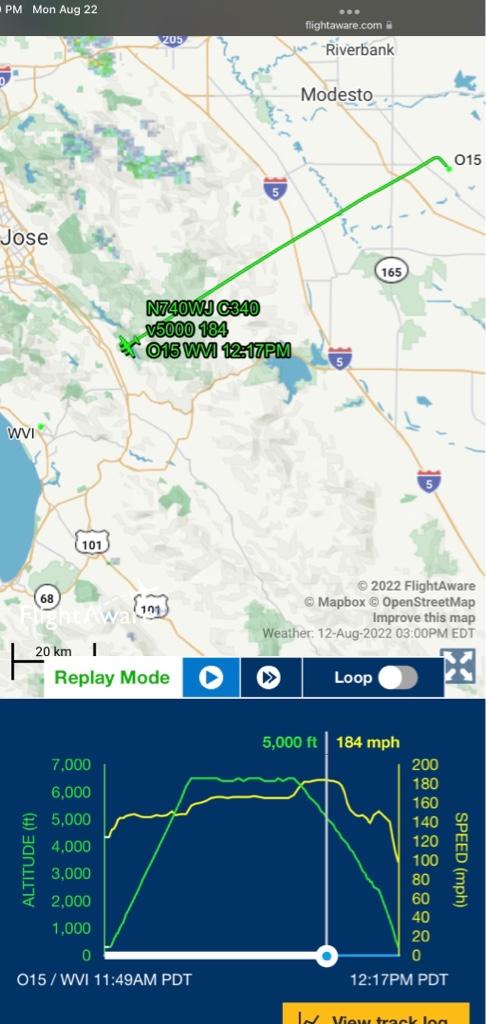Coming back to this once more…
The instantaneous ADS-B speed registered over 180 kts gs for almost the entire approach (until about the moment of impact). But to further back my assertions, look at the timestamps. At exactly 10nm from WVI (as the crow flies), it was 21:51:50. At the moment of impact, just about over the fence, it was 21:55:15. That’s 3 minutes and 25 seconds to traverse those 10 nautical miles. That’s an average speed of 176 knots.
Now, he actually flew about 15% farther than that because he made a 30° left turn (with a slight overshoot) to join a 5 mile final. That does not help his (or your) case. From the same time beginning stamp of 21:51:50, 10nm as the crow flies, he actually flew closer to 11.5nm to reach the same ending timestamp of 21:55:15, which is closer to 202 knots average groundspeed.
So for your countertheory to hold weight, not only would the instantaneous ADS-B readouts have to be wrong, but also the position timestamps, as well as the communication.
We will certainly wait for the NTSB to issue a final report - there could certainly have been other mitigating factors, but there’s a lesson to be learned now about high speed straight-ins, no matter what end of them you’re on.

 Max gear speed is 140 kts.
Max gear speed is 140 kts.